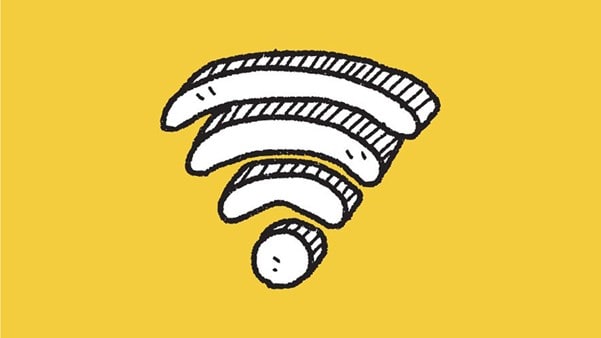But before we kick DSL to the curb, let's take a look at how it works and why it's still being used—even in an era of faster technologies like 5G Home Internet, fiber, and cable.
How does DSL work?
Today's DSL differs from the whiney dial-up connections reminiscent of the "you've got mail" days—offering a broadband internet connection that surpasses the limitations of older connections, allowing data to be transmitted at much faster, albeit not the fastest, rates.
DSL uses a broader frequency spectrum across existing telephone lines, allowing both analog (voice) signals and digital data (internet) transmission to happen simultaneously.
Types of DSL
Here's a look at three different types of DSL technologies:
- Asymmetric Digital Subscriber Line (ADSL). When we talk about DSL, this is what most people are referring to, as it's the most popular type. ADSL is "asymmetric" because it offers faster download speeds than upload speeds. It's well-suited for things like light web browsing, streaming, and downloading.
- Symmetric Digital Subscriber Line (SDSL). SDSL is "symmetric" in that it delivers equal upload and download speeds. It's generally used by small- or medium-sized businesses that need consistent two-way data transfer but don't want to lease an extra line.
- Very High Bitrate Digital Subscriber Line (VDSL). VDSL offers even higher data transfer speeds than ADSL and, while it's limited compared to fiber and today's newer technologies, it's said to be the next-generation of DSL, since it better accommodates today's demand for high-definition video streaming and online gaming.
Who would choose DSL over newer options?
Sometimes, in rural areas, DSL is the only option, since it utilizes phone lines, which are widely available, whereas cable and fiber lines may not be. That means DSL may be the only game in town for now, other than perhaps Satellite internet, which may not be faster, and is often more expensive.
Because DSL is pretty affordable, it's also a good option for light internet users who just want to do the basics like check their email and browse the web here and there.
What about 5G home internet?
You may have heard all the talk about 5G, the fifth generation of wireless network technology. As it becomes more widely available, it's allowing people to cut the cord with old-fashioned internet providers and choose reliable, wireless home internet instead.
At T-Mobile, America’s fastest growing Home Internet provider, we continue to invest in bringing our network and affordable service to small towns, rural areas, and big cities alike. In fact, 50 million homes nationwide are now eligible for T-Mobile Home Internet— a third of them in rural America, many of which previously had limited or no access to broadband options. You can check here to see if it's available near you yet.
How does T-Mobile Home Internet work?
T-Mobile utilizes a 5G Gateway device in tandem with the next generation of Wi-Fi technology, Wi-Fi 6, to keep you connected at home. The device is controlled via a convenient app and since it's virtually wireless (only one plug and you're done!), you can set it up in minutes hassle free.
You can also try it out for 15 days before you cut ties with your other provider. If it's not available in your area just yet, be sure to check back often, and then find a plan that's right for you.
Sources:
- https://www.gartner.com/en/information-technology/glossary/dsl-digital-subscriber-line
- https://www.fcc.gov/sites/default/files/getting_broadband_qa.pdf
- https://www.highspeedinternet.com/resources/compare-internet-provider-types
- https://www.t-mobile.com/coverage/small-towns-rural-areas
- https://www.t-mobile.com/news/un-carrier/t-mobile-celebrates-200-hometown-grants



